What is a Calligraphy pen, and what should you consider when looking for a brush pen to practice or lean brush calligraphy. Additionally, learn which ones are the best for beginners and get a free 10-page worksheet of the basic strokes at the end of the post!
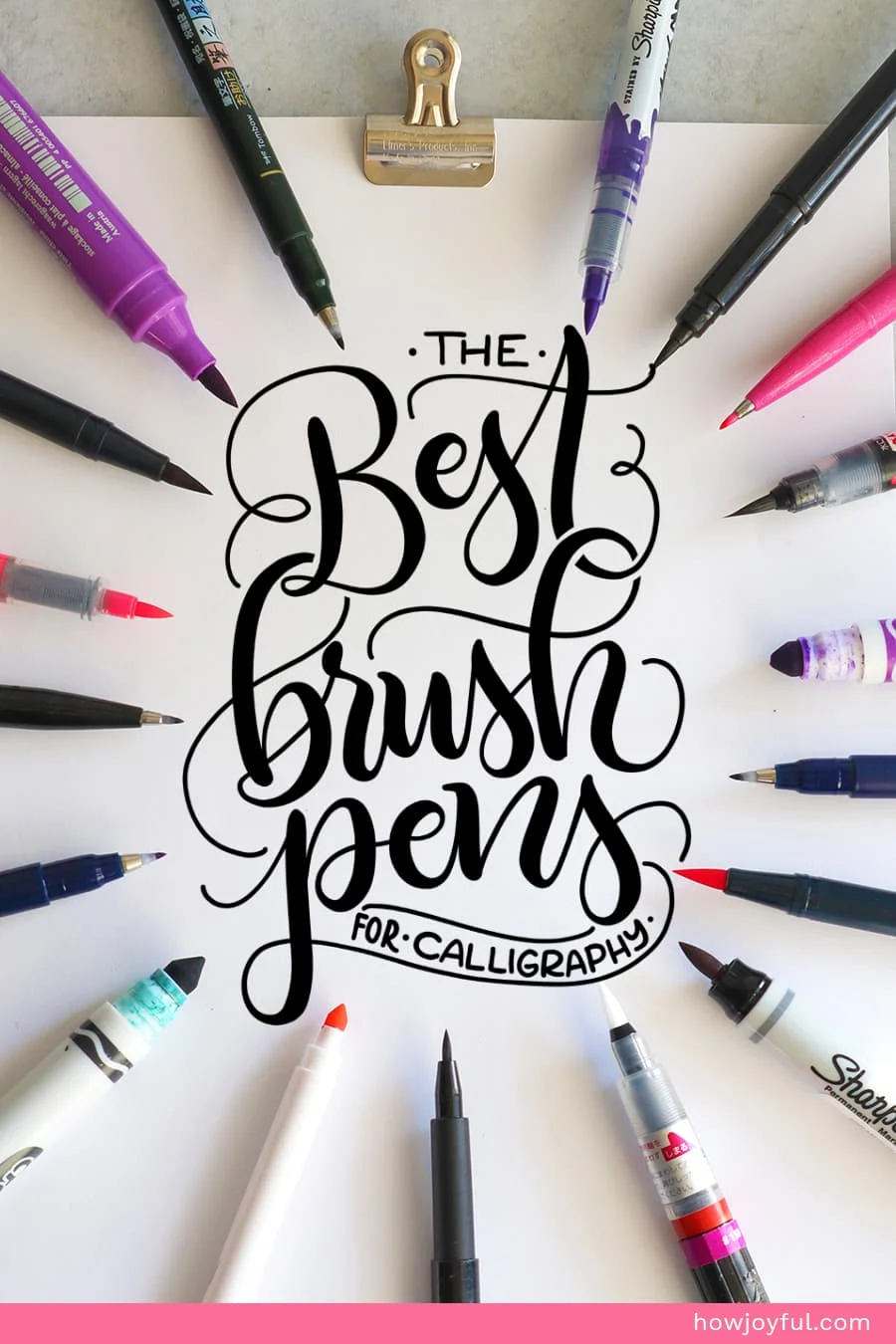
The wide variety of brush pens or Calligraphy pens offered nowadays while amazing (because you get SO MANY options), make the process of picking the right one to get started SO HARD at times!
Well, that is exactly why I am writing this post! So you can have all the information necessary to pick the perfect Calligraphy pen for you! We will dig into the anatomy of brush pens and some important characteristics to look at when purchasing a new brush pen.
I want to help you so that you can make the best decision when it comes to selecting the first brush pen to purchase to get started in your calligraphy journey!
So let’s lift the frustration and confusion curtain and dig into everything that you should know about brush pens!
BUT before we jump into the brush pen reviews, there are some terms we need to go over just in case! Brush calligraphy VS Brush lettering. Are they the same thing?
In short, NOP!
Calligraphy and lettering are very, VERY different, yes for a beginner eye they might look similar because at the end, no matter the method we are constructing letters.
BUT the way they are constructed is very different depending on if you are doing lettering OR calligraphy. If you want to go deep I have a full post going on the differences, but to make this short and sweet:
- BRUSH CALLIGRAPHY: Doing calligraphy with a brush pen, writing in strokes to form letters and words, there are no “revisions” and unless you just do it again, there is no “erasing” or “correcting”
- BRUSH LETTERING: Doing lettering with a brush pen, but also used to describe SIGN MAKING, since they use bushes to create letters. But this is done correcting and many times as part of the “inking” process after a lettered piece has been refined and worked in several sketches.
So as I like to say:
Lettering and Calligraphy are NOT defined by the tools we are using to create the letters. BUT by the method, we are using to construct them. ~ Joy Kelley
Now that this is out of the way, let’s start from the very beginning with brush pens.
WHAT IS A BRUSH PEN?
A brush pen is a writing tool that has a pressure-sensitive tip that will allow us to achieve thick and thin lines depending on the pressure you apply.
Most times, and just like paintbrushes, the tips of the brush pens will have bristles or the shape of a brush.

I will go over the anatomy and the kinds of inks available below, but first, let's take a look into a little bit of story of both Calligraphy and the birth of brush pens.
A BIT OF HISTORY
The history of calligraphy and brush pens, while different, collides in modern times with how popular both are becoming now that they are merged together in current times.
a– A brief history of calligraphy
Writing letters with a pen is only ONE of many ways that people have thought up to make speech visible.
The origin of Calligraphy with brushes dates back to ancient China during the Shang dynasty becoming more common during the Han dynasty (206 BCE – 220 CE) where it was expected for all educated men and some women to be proficient at it.
The origin of the Western script evolved from Phoenicia in about 1200 BC. adapted in the eighth century by the Greeks, those letterforms would continue to evolve and would be borrowed by the Etruscans and in turn by the Romans.
All the rest of the Western scripts (or styles) evolved from the Roman originals.
For a more extended look into the history of Calligraphy, Check out my post: Calligraphy history: Where does calligraphy come from.
b– A brief marker history
In 1910, Lee Newman patented the first felt-tipped marking pen while Benjamin Paskach invented the first fountain paintbrush in 1926.
The 1950s is when markers REALLY became popular with the creation of Magic Markers by Sidney Rosenthal. People started to use Magic Markers for everything —lettering, labeling, making posters, and all sorts of other things.
Soon after, it was discovered that markers had great potential as a new art medium.
From then they have evolved to fill artist needs and the current offering is very wide not only on the kinds of inks but also the tips, flexibility, and elasticity.
ANATOMY OF A BRUSH PEN
Brush pens are a special kind of marker that offers the unique portability of a fountain pen (incorporated ink), the pressure-sensitivity of a calligraphy oblique pen and the maneuverability of a traditional brush.
There are 4 basic parts to a brush pen:

- Cap: This is the part we use to close the brush pens, in most calligraphy pens, it shows the color of the ink of the pen.
- Tips or nibs: As we will read below, the tips vary in material and this helps us classify the different characteristics. Some materials perform better when combined with a specific kind of ink or pigment.
- Body: Generally made out of plastic, the body as the name implies hosts the tip at the top along with the cap, this is usually what we hold when writing.
- Barrel: The barrel refers to the piece that hosts the ink, in some calligraphy pens you are able to detach the barrel from the top so you can replace ink cartridges (but not all brush pens are refillable or have ink cartridges)
BRUSH PEN CHARACTERISTICS
There are different characteristics that can help us determine what brush pen to get when starting and also decide on the things we like or don't about them. I find it very important to know what to look for when selecting them or when you want to set them apart.
1 – Tip kinds
There are basically 3 different kinds of tips, their elasticity, flexibility, and ink flow depends on the fibers and materials used for the tip. The way the ink behaves when we apply it on the paper also has a direct relation to the material of the tip.
- A – Natural hair bristles: These brush pen tips are normally made out of animal hair, like weasel hair or sable hair. Natural hair tips are better for water-based inks as they hold liquid for a longer period of time and retain a fine point when wet.
- B – Synthetic hair bristles: Normally made out of nylon, they are more affordable than natural hair tip pens.
- C – Felt: Felt tips are some of the best for beginners because their firm, marker-like tips offer good control, the downside is that some of them might need reshaping after a few strokes.

2 – Tip sizes
Even though most brush pens will write in different sizes. To generalize, there are 2 groups that we want to categorize the size brush pens: Big pens and small pens.
When we talk about brush pen size, we are not talking about the actual size of the pen, but instead, we are talking about the size of the tip and this translates to the size of the lines (thick and thins) that we are able to make with them, specifically our downstroke (thick).
- BIG BRUSH PENS: The most popular of the big brush pens is Tombow dual brush pen (in water and alcohol base). But below you can see all the array of big brush pens that are in the market (I didn't even cover all of them)
- SMALL BRUSH PENS: There are definitely not as many small brush pens as they are big, but the small ones are some of the best ones for beginners because they are easier to control, and you don't need much elbow movement to create strokes.


3 – Firmness
Brush pen tips range from soft to firm. This depends not only on the kind of tip (felt, natural or synthetic hair) the size (big or small) and density. Felt tips tend to be more firm, thus far creating more predictable strokes.
Natural and synthetic hair tips offer more flexibility, but they require extra practice in order to control the strokes. These kinds of brush pens are the best when you try to create a textured stroke that is affected by speed and ink flow.
[ Example of Firmness of a synthetic fiber Pentel brush pen ]
4 – Elasticity
Elasticity is what allows the brush tip to bounce back to the original shape after being used. A brush pen that is non-elastic changes its form once down pressure is applied and requires a constant re-shaping in order to keep using it. A brush tip that is elastic maintains its shape after being used for multiple stokes.
[ Example of Elasticity of a felt tip Stained brush pen ]
5 – Pigmentation
A pigment is a dry, powdery substance that once mixed with water leaves color behind. Pigmentation is how many of those pigments are mixed in your brush pen. A rich, pigmented pen, will leave a strong, bright-line, while a less pigmented ink, will leave a more faded color.

[ Example of pigmentation of a felt tip Stained brush pen ]
6 – Ink flow
This as the name implies, is the amount of ink that comes out of the brush tip while being used. Some brush pens have a fast ink flow that allows for fast wet lines no matter the speed you are writing, other brush pens have slower ink flow so you can keep your tip on the paper for a longer period of time without creating an ink blob.
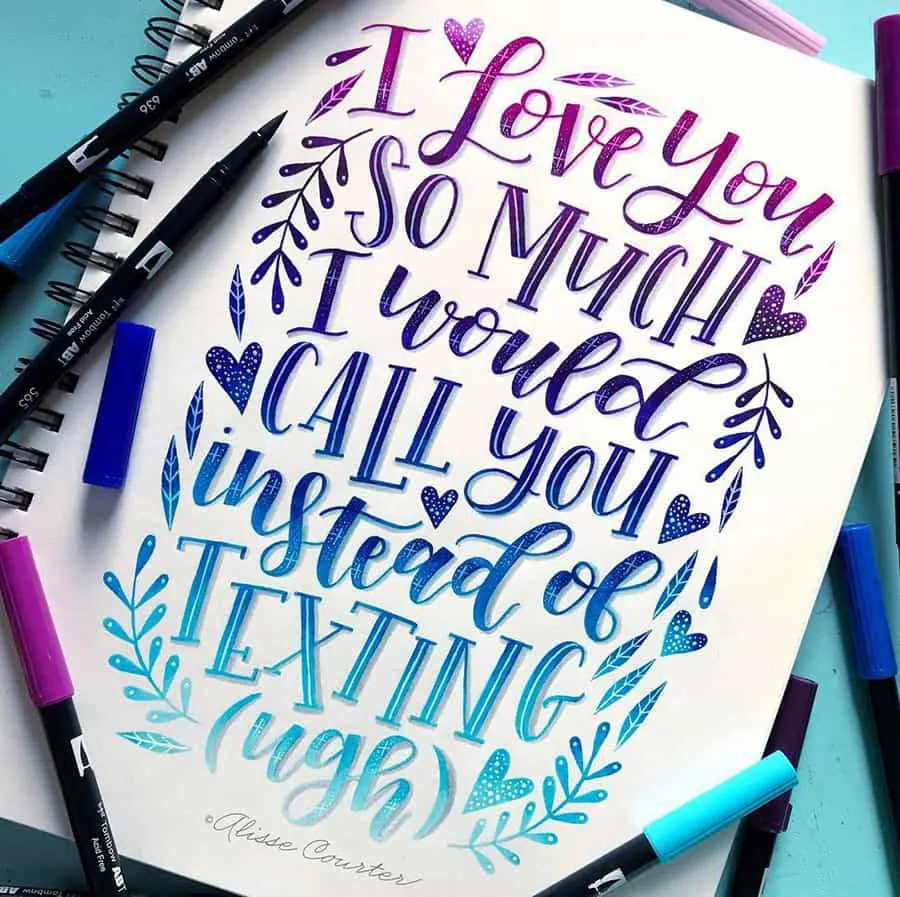
BRUSH PEN INKS
Brush pens, just like regular markers, can also be categorized according to the colorant content, these 3 kinds of inks are:

1 – Alcohol-based inks
These kinds of brush pens, mix ink with alcohol. The color produced by the alcohol-based brush pens dries rather quickly and is relatively permanent. The only way to blend this kind of ink is by using rubbing alcohol, a blender marker or another marker of a similar color.
The blending can be challenging and might still show streaks. They normally have a strong scent, some brands that carry Alcohol-based brush pens are:
2 – Water-based inks
These kinds of brush pens, mix ink with water, or water and glycerin mixture. The ink is normally opaque, waterproof and also dries quickly. They are easier to blend and only require water, they are perfect to use as watercolors.
Unlike the alcohol-based brush pens, water-based brush pens are odorless and safe for kids because of the lack of chemicals. Some brands that carry water-based brush pens are:
3 – Solvent-based inks
These markers mix ink with a solvent, such as butyl acetate, xylene, or methyl isobutyl ketone. Because of the strong chemicals in these markers, they have a very strong scent that can be irritable to the eyes and lungs.
They are popular for craft projects because they can be used and a very wide variety of surfaces, both porous and non-porous.
MAKERS, that are NOT BRUSH PENS
The great part about needing a tool with pressure sensitivity to create letters in Calligraphy is that there is not just one tool available to do so.
Regular kid markers allow changes in the thickness of the stroke when different pressure (along with the angle) is applied.
The most popular ones are the Crayola Broad Tip, but I was super pleased to find that other markers like the Måla from Ikea and the Crayola SuperTips work just as well.
The best part about starting with these kinds of markers is that they are very inexpensive, so you can get lots of colors for a low price. This is especially good when you start practicing drills and go over paper and brush pens very often.

It's incredible what artist can do with these markers, and proves the point that you don't need expensive tools in order to create excellent pieces. below are some examples of art created with Crayola markers.



THE BEST PAPER TO USE WITH BRUSH PEN
Using regular copy paper or anything with texture on it will damage and shorten the life of your brush pen, and we want those cuties to last us as long as possible!
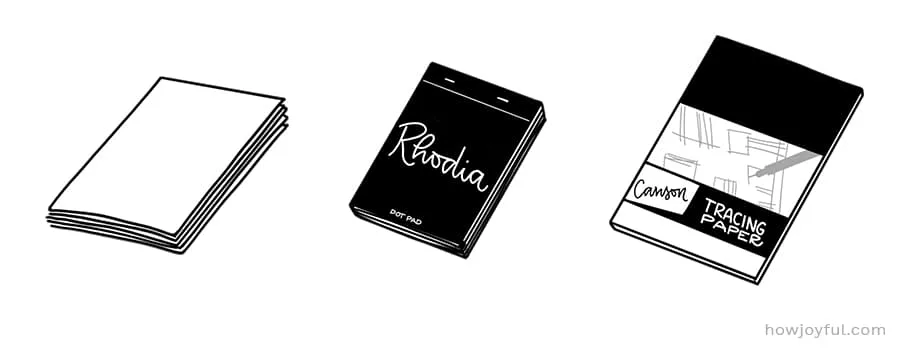
My recommendations for practice paper (in no particular order) are:
- Rhodia pad: This little pad is the most recommended and loved paper-pad among lettering and calligraphy artist because of it's great smoothness. It comes in different sizes so you can use it for drills or just to create small pieces, it's more pricey than other pads, but it treats brush pens very well.
- Canson Tracing paper: This is my favorite paper for inking and also for brush calligraphy since it's super smooth and it does not absorb all the ink as some others do, but because of this you need to be careful and wait for the ink to dry, or you will have a mess in your hands and your paper!
- HP Smooth Laserjet Paper: This is definitely the more economical alternative for paper, I use this exact paper to print all my drill grids. It's a great way to save money while you practice, so you can use your special paper for projects and your brush pens will not get damaged like they do with regular copy paper.
- Canson Marker Pad: This pad is also a great alternative when using brush pens, it's definitely not as smooth as tracer paper, but it gets the job done and it's a lot thicker than regular paper so it will not bleed (or at least not as much) when using super juicy markers or brush pens.
BRUSH PEN REVIEWS
With so many options of brush pens out there, I figure it would be good to first show you each pen, I selected to share the color version of most of them as you can also compare the pigments (and I am a little obsessed with purple and pink).
Big brush pens

- Sharpie Brush Marker: I love how juicy these brushes are, if you have thin paper, you might want to put something underneath just in case it bleeds through the page. The pigmentation is lovely and the tip is just a little softer than the Tombow Dual brushes.
- Tombow Dual Brush: These are by far one of the most popular brush pens in the market, but if you use them for drills they can get way too expensive, so I recommend only using them for finish pieces. They have a wide range of colors in this pack of 96 that includes all of them. Even though it can be a little steep on the price.
- Faber Castell Pitt Artist Brush: This pen is a close favorite, and it's great that you can use with stamps, the pigmentation is great and the tips feel almost like the Tombow Dual brush pens.
- Crayola Broad-line Markers: I love how budget-friendly these markers are, they are perfect for drills and the tips are not too soft (sometimes you might need to reshape them though) but other than that are they are perfect, budget-friendly and they last a long time.
- Sakura Koi Brush: These are flexible and I really like the colors offered, I did find them a little thin on the barrel, so if you are not used to the thickness, it can be a little weird until you get used to the grip.
- Kuretake Zig Brushable: I love that these are dual brushes, but unlike others, they have brush tips on both ends, they just have different shades of the same color. I purchased these ones in Chile, and for some reason, they were much more affordable down there than they are on Amazon. So if you find them at a lower price, you should definitely stock up!
- Karin BrushMarker Pro: The one thing that I really need to give props with these brushes is how pigmented and juicy they are. The Sharpie Stained are very close, but I think these take the number one spot for ink flow, the tips are a little softer, but something you can definitely get used to.
- Artline Stix Brush: These are advertised as kids brush pens (hence the lego-like body) but they perform very well as brush pens, they are relatively inexpensive (depending on where you get them) and the colors are very rich.
- Sharpie Stained: After testing these ones while looking to draw on fabric, I was pleasantly surprised by how soft, juicy and overall pigmented they are. They grew on me and now they are one of my to-go brush pens.
- Crayola Supertips Markers: These are the best bang for your buck if you are doing a lot of drills, you can get a full box of 20 for less than $9 (even though the price is always fluctuating on Amazon), they have a ton of colors available, I bought a box of 100 for super cheap during the Amazon Prime Day event.
- Uchida ColorIn Brush: These have a super-thin body (the thinnest of all of them), and at times it can be almost uncomfortable to grip, but since I had some pencil grips around, I used those and I had no problems after.
- Kuretake Fudebiyori: These are my current favorite brush pens, they have an easy-to-use felt tip and built-in ink supply combine the convenience of a regular maker with the expressive line variation of a traditional brush.
- Måla Ikea Markers: I love how inexpensive these markers are and even though they only come in 12 different colors, they are bright and pigmented. Just like the Crayola ones, you need to reshape or rotate the markers as you create strokes.
- Copic Sketch Dual: These are definitely on the pricier side, but you are able to change the tips and refill the ink so that it can give them a longer life. They are the favorites for many illustrator artists and fans of comics. They are definitely too expensive for drills, but they could be an option for final pieces.
Small brush pens
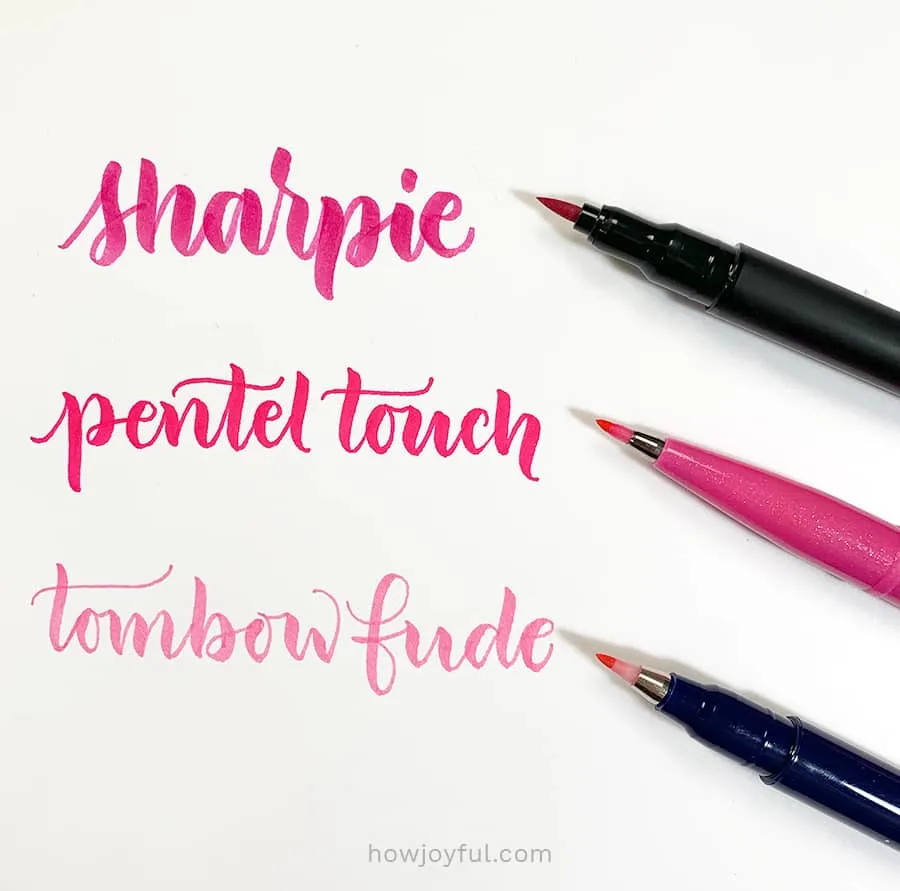
- Sharpie Brush Pen: While I am not loving some of the colors offered by the new sharpie brush pen, they are a great size and prize for beginners.
- Pentel Fude Touch Pen: This one is my second favorite fude brush pen, you can also get it in a bunch of awesome colors and that is always a plus! I love how durable they are and they have lasted me way longer than I thought they would.
- Tombow Fudenosuke Brush Pen Set: This brush pen set is by far my favorite when it comes to learning, it comes in a soft and hard version. Even though the difference is not huge, you can make a little bit thicker downstrokes with the soft tip version. There are two sets of colors offered now, a neon version and the regular colors version. They handle pressure amazingly good and if you use them with the correct paper they can last you a long time.
Size differences
I also wanted to share what the difference in sizes looks like one next to the other. Since many times we look at them from up close, below you can see the difference in real size for both.

THE BEST BRUSH PENS FOR BEGINNERS
When thinking about the best brush pen for beginners, I can’t help but think that even though I can give you recommendations for what I personally think would be the best one to get you started, there is no right or wrong brush pen for you as long as you are practicing and improving.

Some calligraphy pens might be more challenging at the beginning, but if you are the kind of person that likes to start with the hardest part first, the soft tip brushes might be the ones for you, so you can master the hardest part first, this way any other brush pen would be super easy to use.
And while this approach is not the most common one, I’ve seen many artists take this route very successfully. There are many roads to the same destination, and that is OK =]
What I would personally recommend you is to go the more traditional way.
Start with a pen that is more firm and has a small tip, because it will be easier to control, then you can move to larger and softer brush pens as you feel more comfortable.
When thinking about brush pens for beginners, I like to consider a couple of factors:
- Firmness and elasticity – how predictable and easy to maneuver the brush pen is. And how well it will bounce back preventing from having to reshape it often.
- Price: When you are a beginner, you will need a lot of practice and drills to improve, and that requires a lot of ink and brush pens, so the more budget efficient a pen is, the better.
And with those factors in consideration, my personal recommendations for beginners are:
Drumroll, please!

- Crayola Super Tips: Because you just can't beat the price. And even though they are not “technically” brush pens, you can achieve the same result utilizing the “golden rule” of Calligraphy (thin light upstrokes, full pressure downstrokes).
- Artline Stix: The are so easy to maneuver. This one is a medium to big brush pen, somewhat comparable to the Tombow Dual brush pens, but at a lower price (depending on where you buy them though).
- Kuretake Fudebiyori: These are my personal favorite currently, I love the pigmentation and to me, they have the perfect flexibility.
- Tombow Fudenosuke: While I added this two last fude pens at the end, they are some of my top choices when it comes to getting started, the only reason why they are not at the top is that if you plan to practice a lot, they can get expensive. But the flexibility and thickness are perfect for beginners since you can control them better (they are also available in colors now).
- Pentel Touch: I know some people prefer this fude pen instead of the Tombows, but to me, they perform so similar. The main advantage that these had for a long time was the variety of colors, but Tomow fixed that and now offers their fudenosuke brushes in two sets of colors.
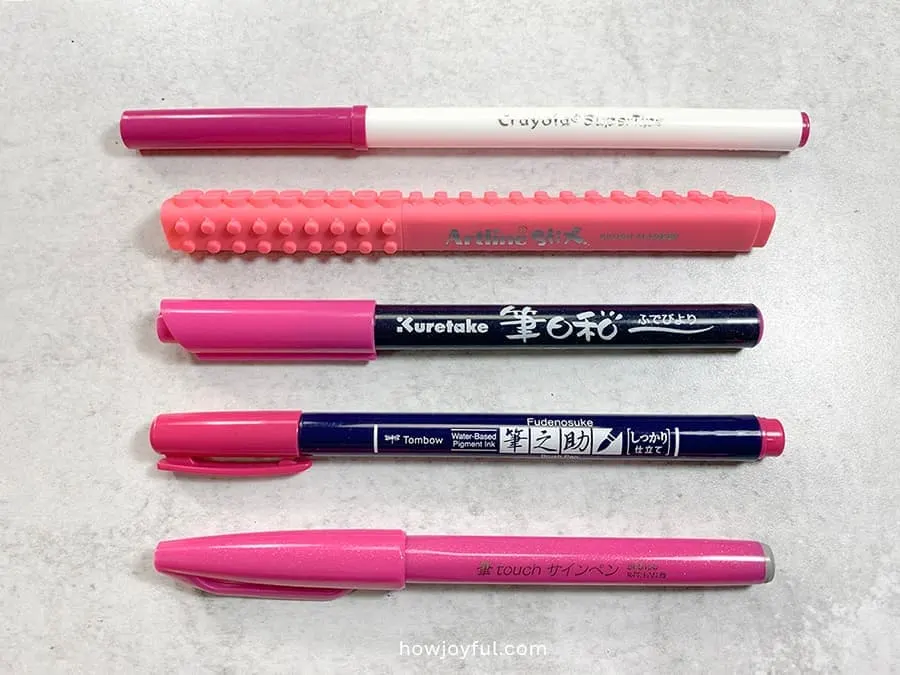
Final thoughts & FREE worksheets
I hope this blog post helps you figure what characteristics are the most important for you, and to select the best calligraphy pens for you.
And because I know that the brushes are just a small part of the equation, I set up a free workbook with the basic strokes, so you can practice and improve your strokes and letters.
All you have to do is subscribe to the Newsletter below and the Workbook will be on the way to your inbox.
And if you are already a subscriber, you can access this and all other freebies inside the Letter Vault.

I hope you enjoyed this post and if you have any suggestions for future articles, just contact me, or share it with me on social media!
And if you want to save this post for later just pin any of the images below =]




Keep creating!
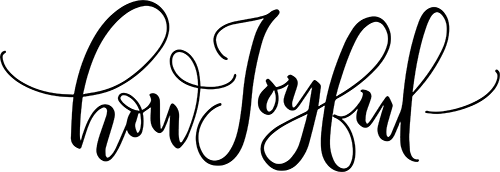
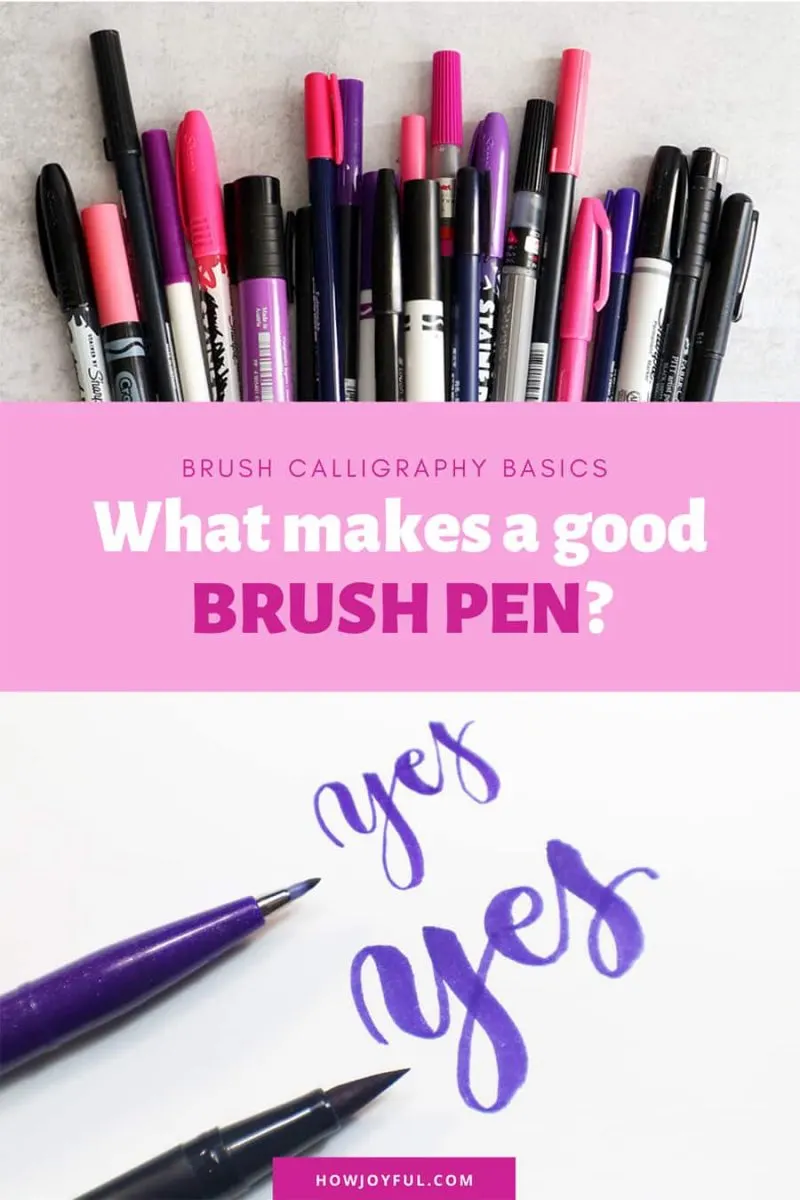











Dino
Wednesday 30th of November 2022
Jako dobre i korisne informacije ...jako detaljno opisane informacije...i to BESPLATNO...svaka cast...hvala
Joy Kelley
Tuesday 22nd of August 2023
Nema na čemu! =]
Shilpi
Saturday 6th of March 2021
Very informative . I really liked it !!
Joy Kelley
Sunday 7th of March 2021
So glad you liked it!
Rodrigo
Sunday 28th of February 2021
Thank you for the sheets! Muchas gracias! Muito obrigado, vou praticar!
Joy Kelley
Monday 1st of March 2021
You are very welcome, Rodrigo!
Elisabetta
Thursday 25th of February 2021
Grazie! ora inizierò ad esercitarmi❤️
Joy Kelley
Saturday 27th of February 2021
You are very welcome =]
Teresa Geary
Tuesday 23rd of February 2021
Disregard my last comment. I finally figured it out. Thank you for posting the workbooks they’ll be extremely helpful!